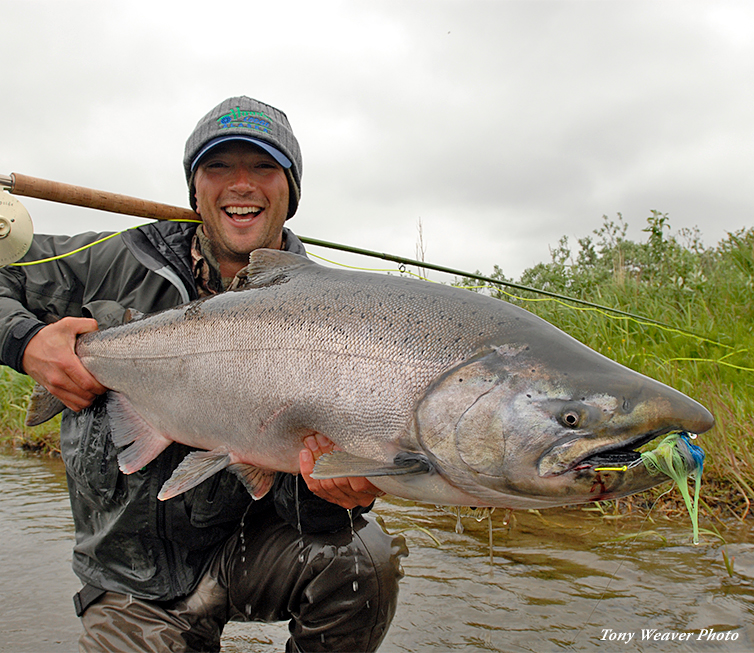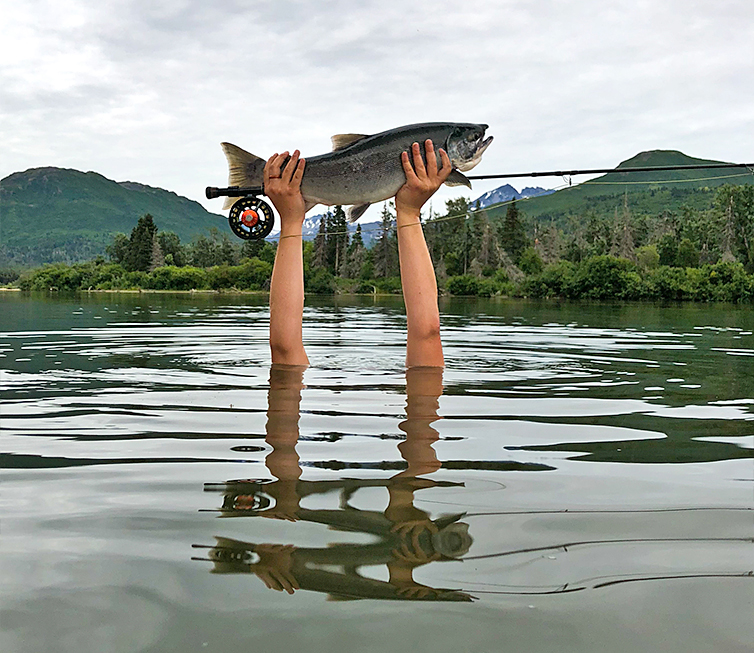The Chinook salmon (Oncorhynchus tshawytscha) is the largest and most valuable species of Pacific salmon in North America, as well as the largest in the genus Oncorhynchus. Its common name is derived from the Chinookan peoples. Other vernacular names for the species include king salmon, Quinnat salmon, Tsumen, spring salmon, chrome hog, Blackmouth, and Tyee salmon. The scientific species name is based on the Russian common name chavycha (чавыча).
Chinook are anadromous fish native to the North Pacific Ocean and the rivers of western North America, ranging from California to Alaska, as well as Asian rivers from northern Japan to the Palyavaam River in Arctic northeast Siberia. They have been introduced to other parts of the world, including New Zealand and Chile, Patagonia.
The Chinook is blue-green, red, or purple on the back and on the top of the head, with silvery sides and white ventral surfaces. It has black spots on its tail and the upper half of its body. Chinook are unique among the Pacific salmon in combining black spots and silver on the tail. Another distinctive feature is a black gum line that is present in both salt and freshwater. Adult fish typically range in size from 24 to 36 in (61 to 91 cm), but may be up to 58 in (150 cm) in length; they average 10 to 50 lb (4.5 to 22.7 kg), but can reach 130 lb (59 kg). Chinook salmon like to hold in fast, highly oxygenated runs with depth and take flies on the swing.
















